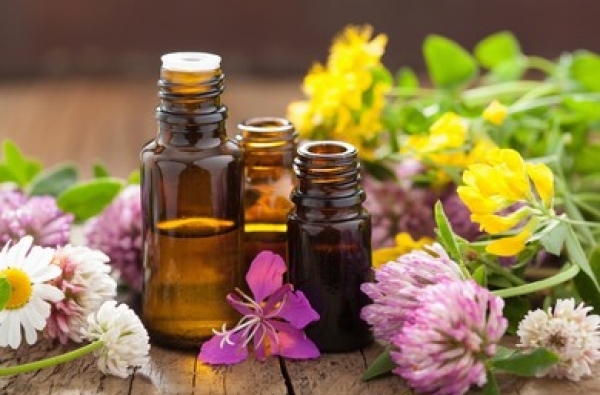
Essential oils are concentrated plant extracts that are often used in natural health and wellness practices. These oils are believed to have a range of therapeutic benefits and can be used to support the body’s natural healing process. In this blog, we’ll explore some of the uses and advantages of essential oils for healing.
One of the most well-known uses of essential oils is for aromatherapy. When inhaled, essential oils can have a calming or uplifting effect on the mind and body. For example, lavender essential oil is often used to promote relaxation and sleep, while peppermint essential oil is known for its energizing and invigorating properties.

Essential oils can also be applied topically to the skin. When applied in this way, essential oils are thought to help soothe skin irritation, reduce inflammation, and promote healing. For example, tea tree oil is often used to treat acne and other skin conditions, while frankincense essential oil is believed to have anti-aging and skin-tightening effects.
In addition to their topical and aromatic uses, essential oils can also be taken internally in some cases. For example, some people use peppermint essential oil to support digestion or ginger essential oil to relieve nausea. However, it’s important to note that not all essential oils are safe to take internally, and it’s always best to consult with a healthcare provider or aromatherapist before using essential oils in this way.

One of the major advantages of essential oils is that they are natural and often have fewer side effects compared to synthetic medications. In addition, essential oils are generally easy to use and can be incorporated into a variety of wellness practices, including massage, yoga, and meditation.
Another advantage of essential oils is their versatility. Many essential oils have multiple uses and can be used to support a wide range of health concerns. For example, frankincense essential oil can be used to promote relaxation, reduce inflammation, and support immune function.
It’s also worth noting that essential oils can be blended together to create custom remedies that are tailored to an individual’s specific needs. For example, a blend of lavender and frankincense essential oils might be used to promote relaxation and support immune function, while a blend of peppermint and eucalyptus essential oils might be used to support respiratory health.
In conclusion, essential oils are a powerful natural tool that can be used to support the body’s natural healing process. Whether used for aromatherapy, applied topically to the skin, or taken internally in some cases, essential oils offer a range of therapeutic benefits and can be a valuable addition to any natural health and wellness routine.